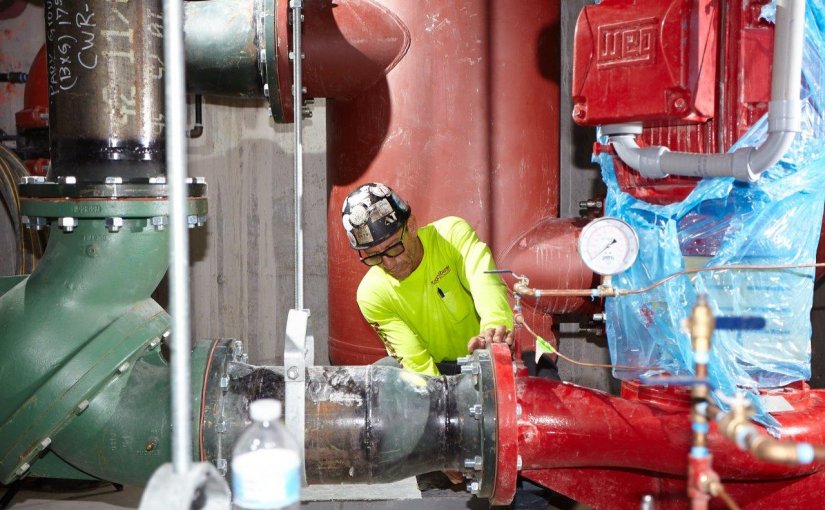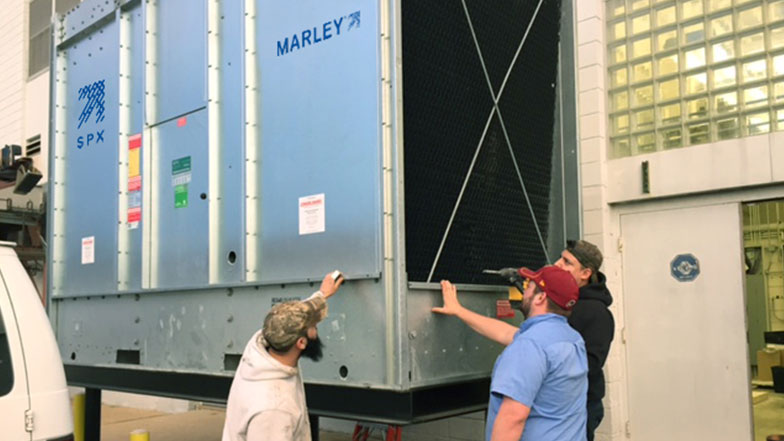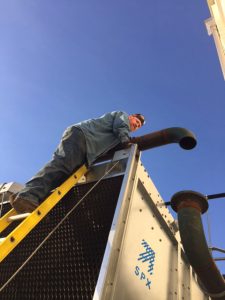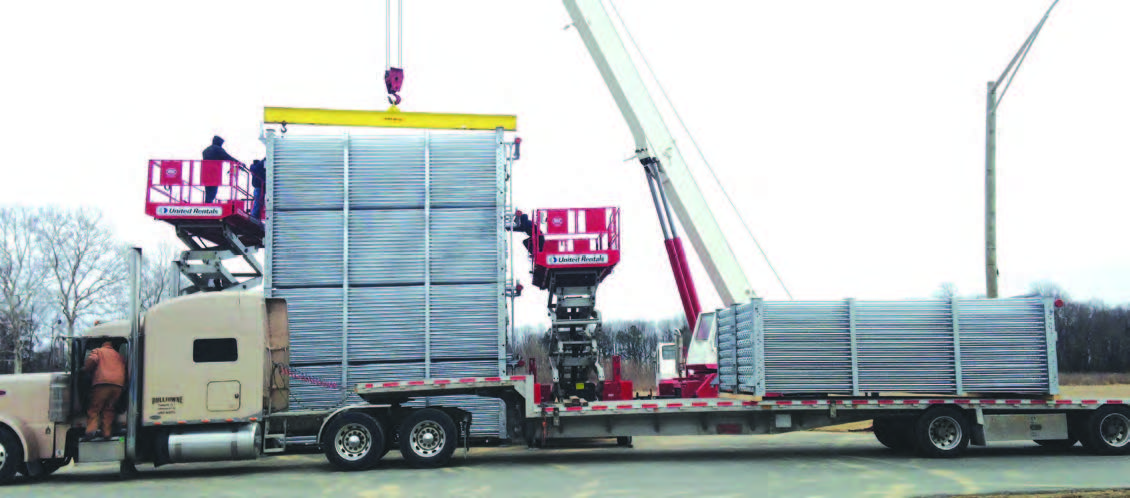Managing the Houston Heat
By specifying a new Marley® MH Element™ Fluid Cooler from SPX Cooling Tech, LLC, Letsos Company provided a more efficient, more sustainable alternative to repairing the deteriorating existing cooler of an historic Houston building while maintaining a similar footprint, simplifying the installation process.
Bringing Back an Icon
Letsos Company has helped maintain the HVAC system for the former Plaza Hotel, an iconic nine-story building in the Museum District of Houston, TX, for nearly a decade. Located just north of the Museum of Fine Arts, the building opened in 1926 and was once known as Houston’s first “million-dollar hotel.” Its luxurious rooms and fine dining made it a gem of the city, and it was one of the first buildings in the area to use a cutting-edge technology at the time: air conditioning.
In early 2023, when it came time for the building’s owner to make yet another repair to their system’s equipment—this time to the building’s fluid cooler, a significant investment—the contractor sat down with the operators to come up with a better solution.
“The mini heat pumps in the building repeatedly had condenser water issues, the existing fluid cooler kept requiring repairs, and in the end, the system just could not keep up with the temperatures,” explained Garrett Eklund, project manager and estimator for special projects at Letsos. “It was getting to the point that it was too expensive to maintain, and the fluid cooler needed to be replaced.”
Letsos called in a little help from Houston-based cooling tower/fluid cooler experts S&S HVAC Equipment to provide a quote for a new tower and go over cost comparisons. The team selected the Marley Fluid Cooler, a similar model to the original, upgraded to stainless steel construction and copper coils.
SPX offers advice on choosing the right fluid cooler: https://spxcooling.com/news/choosing-the-right-fluid-cooler/
The “Million-Dollar” Location
In the early 1980s, the hotel and apartment building closed after struggling to keep up with the times. It remained closed until it was purchased by a local architect/design firm in 2005. The building was renovated, and new mechanical systems were installed in 2007 to keep the building cool in the hot Houston climate. The neighborhood around the building has also seen a much-deserved revitalization in the past decade.
The building’s popular location meant more traffic, so one of the first steps during the fluid cooler replacement project was to secure permits to close the street to lift the new equipment into position via crane. To make things a little easier, the fluid cooler was located on the back side of the building, atop a parking garage that was added during the renovations.
“The building is in a tight, pretty crowded urban area, so we had to be mindful of that,” remembered Tom Brimer, Letsos sales associate. “The fluid cooler arrived on a Thursday afternoon, and the street was closed off. We had a plan in place to get the unit off the street Friday and start up on Saturday evening.”
An Unwanted Surprise
The fluid cooler arrived at the site in two pieces: the bottom section held the unit’s rows of copper coils, and the top contained fill and the fluid cooler’s fan. Each piece was inspected and made ready to lift that evening. But before lifting the unit, the team noticed that a brace on one of the pieces had been damaged during shipping and would need to be repaired before lifting into place.
Letsos reached out to S&S, and they were available immediately. “We have a trim-out crew on standby for all our projects,” said Angela Sherman, president of S&S HVAC Equipment. “At that point, the old unit was down and there was no delay optional, you have to find a way. And we did just that.”
The S&S team repaired the brace onsite and contacted the SPX Cooling engineering team to approve the fixed piece. The engineering team looked at the repairs and approved them the same day.
Orderly Installation and Start-Up
After the one small setback, the rest of the project was completed according to plan. The fluid cooler was delivered on Thursday and lifted into place the following day. The teams were all prepared once the unit was installed to begin piping it in. Piping was installed and updated on Friday and prepared for start-up on Saturday. The start-up process went as planned, and the system was back online Saturday, without delays.
“Following start-up, we saw some issues with the control system, but they were quickly addressed,” Eklund noted. “We had to get all the heat pumps in the building balanced, too. But the tower has been doing great to manage it the whole time.”
The former Plaza Hotel building, with 82,000 square feet of rental office space, is now home to Prosperity Bank and Beers Law Firm, among others, and its fluid cooler is updated and working well thanks to the team at Letsos.
For more information, visit spxcooling.com.


























